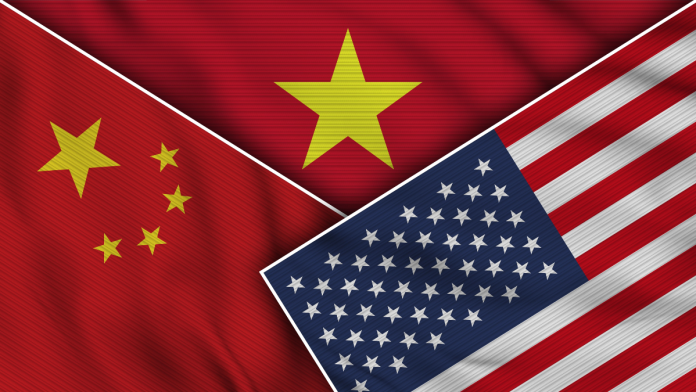When the United States raised tariffs on Vietnam, many thought it would mark a turning point. The pressure was intense. Washington wanted global manufacturers to reduce their dependence on China, and Vietnam seemed like the next target in a widening trade war. But despite early fears and a brief pause in business, the economic bond between the two nations proved stronger than expected.
Trade War Sparks a Shift
Last year, the U.S. imposed steep tariffs on Vietnamese goods—up to 46% in some cases. Even higher duties, reaching 40%, were applied to products suspected of being rerouted from China. These penalties aimed to push countries to decouple from China’s supply chains.
U.S. trade adviser Peter Navarro openly criticized Vietnam’s close ties to China, calling it “essentially a colony” in a televised appearance. Orders from U.S. buyers dipped. Vietnamese officials quickly responded, sending delegations to Washington to negotiate relief.
🛢️ Tariff terror averted — U.S.–South Korea ink explosive $100B energy & $350B investment pact
Despite this political tension, a dramatic shift away from China didn’t happen. Instead, Vietnam continued to operate in the middle of global supply chains—with Chinese investment playing a growing role.
Chinese Money Kept Flowing In
Even as tariffs took effect, Chinese companies continued to expand their presence in Vietnam. In the first half of this year alone, investors from China and Hong Kong pledged over $3.6 billion in the country—a 23% jump from the year before.
Bac Ninh province, just outside Hanoi, has become one of the busiest industrial zones. Provincial official Nguyen Duc Long shared that the area expects to issue another $1 billion in new investment licenses, mostly to Chinese firms. “Companies in our industrial parks are still operating normally,” he said. “Goods are coming in and going out.”
Trump Traps Vietnam in Tariff Storm: Is Hanoi the New Trade Pawn?
According to My Trinh, a manager at a major industrial park developer, factory buildings are being leased faster than they can be completed. Chinese electronics firms, including those making controllers and circuit boards, are among the biggest takers. “They are still accelerating without any hesitation,” she said.
Vietnam’s appeal remains strong. One industry analyst pointed out that even with a 20% tariff, the country’s advantages—low costs, skilled labor, and proximity to China—help it stay competitive.
Vietnam Still Needs China’s Parts
Beneath the surface, Vietnam’s economy still relies heavily on China. In just six months, they imported nearly $85 billion worth of Chinese goods. These imports made up around 40% of total incoming shipments and included everything from machine parts to electronic components.
💣 Tariffs could skyrocket past 100% if US-China talks fail in Stockholm – the world holds its breath
One senior economist noted that Vietnam’s most important exports—like phones and textiles—depend on Chinese inputs. Much of what the world sees as ‘Made in Vietnam’ still begins with parts made across the border.
An internal report from the Vietnamese government suggested that tech exports to the U.S. could drop by up to $15 billion this year due to tariff effects. Although investment from multiple countries is rising, Chinese suppliers remain crucial to the system.
At a recent electronics expo in Bac Ninh, Chinese company leaders were actively scouting new deals. One CEO from Guangdong said the opportunities in Vietnam were too good to pass up. Developers like Hardy Diec, who oversees operations for a large industrial real estate group, confirmed the demand. “Customers are really pushing us to get factories ready as soon as possible,” he said.
Many companies are signing long-term contracts, often for five years or more. While the tariffs may have created uncertainty, they haven’t stopped the movement of Chinese money—or parts—into Vietnam.
